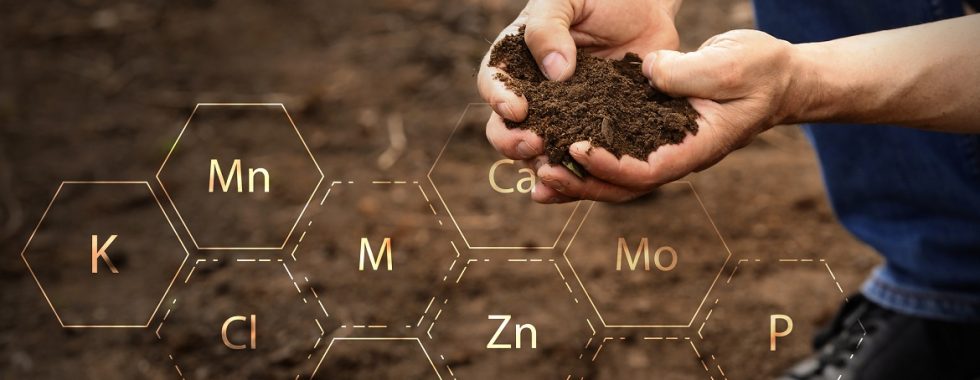Understanding Soil Extraction Methods: A Guide for Growers and Agronomists
Soil nutrient extraction methods are essential for laboratories to determine the amount of nutrients available for crop uptake, guiding effective fertilization strategies and ensuring optimal crop yields. The adequate soil extraction methods for a particular soil may vary significantly based on soil type and targeted nutrients. This can be confusing, but choosing the right method is crucial for accurate soil analysis and nutrient management.
The Concept of Nutrient Availability
In agriculture and agronomy, it is important to measure the nutrients that are readily available to plants, rather than the total nutrient content in the soil. Extraction methods have been developed based on extensive research to estimate the available portion of nutrients. This involves using specific chemicals to mimic the conditions under which plants absorb nutrients, thereby providing a more accurate picture of what is actually accessible to crops.
What is a Soil Extraction Method?
A soil extraction method is a laboratory procedure used to assess the concentration of specific nutrients that are available to plants. These methods use various chemical solutions to extract nutrients from the soil, mimicking the conditions under which plants absorb them. The choice of extraction method depends on the nutrient of interest and the soil type. Each method is designed based on extensive research to provide accurate and reliable results under specific conditions.
Differences Between Soil Extraction Methods
The primary differences between these methods lie in their chemical composition and the soil pH conditions they are best suited for. For instance, the Bray method is ideal for acidic soils, while the Olsen method is tailored for alkaline conditions. Mehlich-3 is a versatile method suitable for a broad range of soil types, capable of extracting multiple nutrients simultaneously, making it a popular choice in many regions (Ask IFAS – Powered by EDIS) (vric.ucdavis).
Method Nutrient Target Best for Soil Type Description
Bray Method (1 & 2) Phosphorus (P) Acidic soils (pH < 7) Uses a mixture of hydrochloric acid and ammonium fluoride to extract phosphorus, effective in low pH soils where phosphorus is limited by iron and aluminum.
Mehlich-1 Method Phosphorus (P), Potassium (K) Acidic soils (pH < 7) Uses a mix of dilute hydrochloric and sulfuric acids. It is an older method, often replaced by Mehlich-3 but still used in some regions.
Mehlich-3 Method Phosphorus (P), Potassium (K), Calcium (Ca), Magnesium (Mg), Micronutrients (Zn, Cu, Mn, Fe) Wide range of soils (acidic to neutral) A universal extractant combining acetic acid, ammonium nitrate, ammonium fluoride, nitric acid, and EDTA. Versatile for extracting multiple nutrients simultaneously.
Olsen Method Phosphorus (P) Alkaline soils (pH > 7) Uses sodium bicarbonate to extract phosphorus, particularly effective in calcareous soils where phosphorus is bound to calcium.
Ammonium Acetate Method Potassium (K), Calcium (Ca), Magnesium (Mg) Wide range of soils Uses ammonium acetate to extract cations, commonly used to assess exchangeable cations in soil, providing insight into soil fertility.
DTPA Method Micronutrients (Fe, Mn, Cu, Zn) Neutral to slightly alkaline soils Uses DTPA as a chelating agent to extract micronutrients, effective for soils with pH close to neutral.
Colwell Method Phosphorus (P) Common in Australia Uses bicarbonate extraction, similar to the Olsen method, tailored for specific regional soils.
Numerical Variability Between Methods
It’s important to note that numerical results can vary significantly between different extraction methods. For example, phosphorus levels measured using the Bray method may be different from those obtained using the Olsen method. This variability occurs because each method extracts nutrients differently based on the soil’s chemical properties. For instance, a soil test using the Bray method might show a phosphorus level of 30 mg/kg, while the same soil tested with the Olsen method might show 20 mg/kg. Understanding these differences is crucial for accurate soil nutrient management.
Importance of Choosing the Right Soil Extraction Method
Selecting the appropriate soil extraction method is crucial for several reasons:
- Accuracy: Ensures that the nutrient levels measured are reflective of what is available to plants. Using the wrong method can lead to inaccurate results, affecting fertilization decisions.
- Soil Type Compatibility: Different soils have varying chemical properties. Matching the extraction method to soil type (e.g., acidic vs. alkaline) ensures that nutrients are correctly extracted and quantified
. - Environmental Impact: Proper nutrient management based on accurate soil testing helps prevent over-application of fertilizers, reducing the risk of nutrient runoff and environmental contamination.
How Labs Choose an Appropriate Extraction Method
Laboratories select extraction methods based on several factors:
- Soil pH: Determines whether an acidic, neutral, or alkaline extraction method is needed.
- Nutrient of Interest: Specific methods are better suited for certain nutrients. For example, the Olsen method is preferred for phosphorus in alkaline soils.
- Regional Practices: Local soil conditions and agricultural practices influence the choice of method. For instance, Mehlich-3 is often used in regions with diverse soil types because of its broad applicability (Ask IFAS – Powered by EDIS) (vric.ucdavis).
Practical Applications for Growers and Agronomists
Understanding and utilizing the correct soil extraction methods can greatly enhance soil management practices. Here are some practical steps:
- Soil Testing: Regular soil testing using the appropriate method helps in monitoring soil nutrient levels accurately. This step is foundational for developing effective fertilization plans and managing soil health.
- Fertilization Plans: Use test results to develop precise fertilization strategies that cater to the specific needs of your crops and soil conditions. Accurate soil tests help avoid over-fertilization, which can lead to nutrient runoff and environmental damage.
- Environmental Stewardship: Implementing correct nutrient management practices minimizes environmental impact, promoting sustainable agriculture. By aligning fertilization practices with soil nutrient availability, farmers can reduce the risk of nutrient leaching into water bodies.



